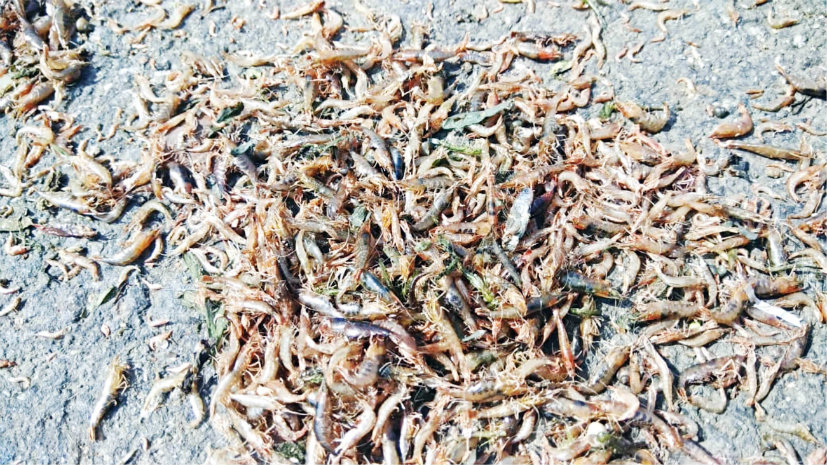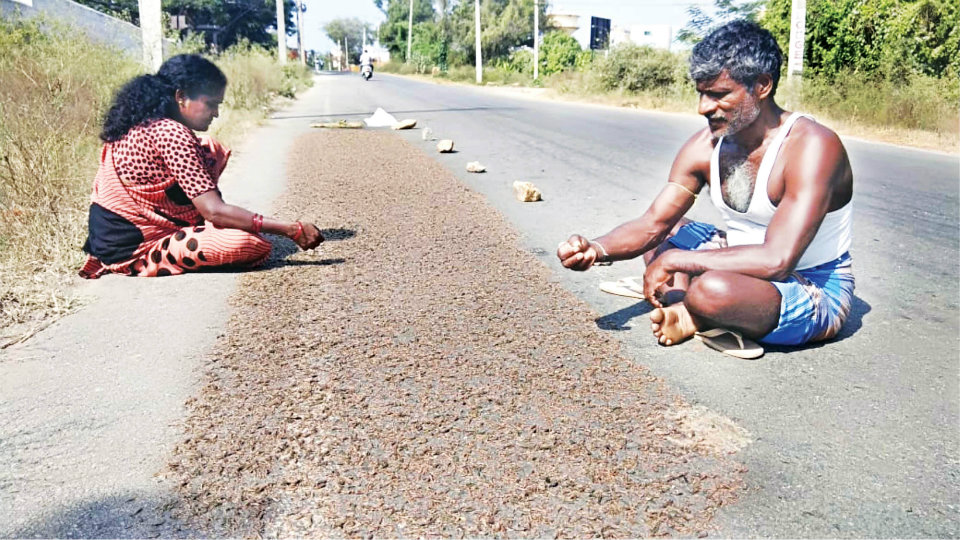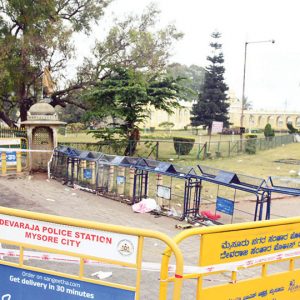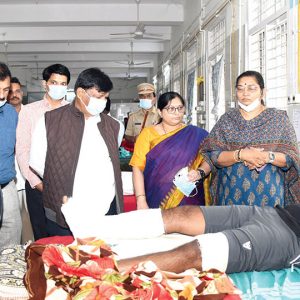Fishermen scout for shrimps on Cauvery River banks to serve you a Jhinga lala of spice
Srirangapatna: It is winter and time for some piping hot fried freshwater prawns (Seegadi) or shrimps (Jhinga in Hindi). Though there is year-round sale of saltwater prawns, the demand for freshwater prawns increases post-November and peaks during winter season that runs up to Maha Shivaratri.
Many vendors catch these prawns from the river side and sell them at some nook and corners of the city. Vendors gather at selected places with a mound of harvested shrimps — small in size when compared to salt water prawns (Tiger Prawns) — and sell them in Seru (a measurement unit). Considered nutritious, there are usually many buyers. And the price too is on the higher side — a Seru of prawn costs anywhere between Rs. 300 and Rs. 375.
Regular fishermen and some part-time fish catchers flock to the Cauvery Riverside with nets to catch these shrimps. Shrimps thrive amidst plants, weeds and shrubs that grow by the side of the river. In Srirangapatna alone, there are more than 30 families that depend on shrimp harvesting to eke out a living.
They usually get the harvest to Mysuru or Mandya and sell on roadsides. Unsold daily catch is cleaned and dried on the roads and packaged to be sold later as dried prawns fetch a higher price. Dried shrimp too is in great demand during winter as many tasty and spicy dishes are made out of them with the combination of potato, green chillies and onions. Tangy Seegadi bajji too is a famous dish that is cooked in this season. Some people even make Seegadi chutney and it is quite famous in coastal belt.
Shrimps are a rarity on the river banks when the rivers are in full spate. But when the water recedes and when the banks are full of shrubs, the area is dominated by shrimps and crabs. Fishermen venture out of their homes as early as 5 am and by 10 am, their shrimp hunt is over. Carrying basketful of the catch and a weighing measure, these fishermen head to Mysuru or Mandya to market their produce and in the available money, they buy their household items.
Harvesting shrimps is not an easy task. When the net is spread, other beings like fish, crabs and frogs too are trapped along with stones and dry sticks. These have to be carefully separated unless the net entangles and breaks. While shrimp fish and crabs are segregated, sticks and stones are discarded.

Once segregated, shrimps are sieved once or twice to remove sand and other impurities and are filled into containers or baskets to be transported to cities. Dishes made out of Seegadi are of unique taste and consumers believe that the food keeps body warm during cold season and supply the body with rich minerals available on river side.
Those who are suffering from joint aches, pregnant women and neo-natal mothers derive special energy and hot shrimp soups are prepared to beat the evening cold. Elders say that soup cures common cold and cough. Fishermen say that on an average they manage to catch 10 Seru of shrimps and on some days there will be no catch. “A 10 Seru catch is bumper as we can earn up to Rs.3,000. But not all days are same. Sometimes, after hard labour, we are just left with Rs.300 at the end of the day,” says Srinivas.
“It is a laborious process to catch, segregate and sieve shrimps. After that, the harvest is taken to the market and we sell them by the side of the roads till late in the evening. This is the only season where shrimps are available. Rest of the months we need to look for something else to sell or we do search for manual labour work,” says Prakash.
The Department of Fisheries has somewhat become defunct in Srirangapatna and it is not even supplying fish nets to eligible fishermen from time to time. Fishermen folk have to repair the nets again and again and enter the waters.
By Vinay Karekura








Recent Comments